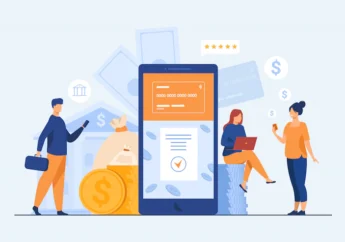What Are Non-Banking Services?
by Mashum Mollah Banking Published on: 05 October 2022 Last Updated on: 21 November 2022

Non-banking services provide a range of services beyond financial products and services.
These services include information, education, networking, market access, and recognition. To be effective, non-financial services must be integrated into a comprehensive business strategy.
They should not be considered as a CSR or marketing effort but rather as an integral part of a company’s strategy. The objectives must be set in long-term goals, and each service’s key performance indicators must be developed.
Financial Service Providers
A Financial service provider (FSP) is a company that provides financial services without a full banking license. This company provides services such as lending solutions but is not authorized to accept deposits from the Canadian public. Similarly, they cannot offer typical banking products like short-term term deposits or Guaranteed Investment Certificates.
FSPs provide financial advice to individuals and companies. While banks are generally the preferred method, many individuals still seek non-banking services. They can offer a range of products and services to the general public, including investment advice, investment management, and insurance.
In addition, many individuals seek advice from banks and non-bank financial institutions, like online loan checks on MaxLend reviews in Maxlend loans, which might help ensure their financial future is secure and stable.
Open-Banking Licensed Providers
The Open Banking Regulation (OBR) requires financial institutions to share account information with third-party payment service providers.
It is a policy aimed at stimulating competition and innovation. One of the most prominent examples of open banking is the European Union (EU), where all banks must allow third-party access to account information. According to the Open Banking Tracker, there are currently 535 third-party providers in the EU.

Open banking requires banks to provide APIs to authorized financial service providers containing account holder information and transaction history. However, this information can only be shared if the account holder has explicitly consented to the sharing of this information. Typically, consumers agree by completing a form online and accepting the terms and conditions. Once an application is approved, the third-party provider can access the shared data.
As a result, open banking providers must undergo rigorous checks before being granted access to their customer’s financial data. These checks are intended to ensure the safety of the consumer’s information. In addition, third-party service providers must inform consumers about how their data is used. This creates transparency and empowers consumers to control the use of their financial data.
Peer-to-Peer Lending
Peer-to-peer lending is an alternative way to borrow money. It requires that the borrower be trustworthy and reliable. Applicants should also look into the terms and conditions of the loan before applying. Most peer-to-peer lenders will not accept applications from borrowers with poor credit. They will also charge an origination fee. This fee can range from one to eight percent of the loan amount.

Peer-to-peer lending is not a new concept. This non-banking service has existed for many years since banks turned away potential borrowers. In these times, community members were able to provide an alternative source of financing.
The idea behind peer-to-peer lending is to match borrowers with investors who can provide them with the money they need. These websites usually reach the borrower and the lender using an algorithm. Once the two parties are matched, the lenders will provide loans at a set interest rate based on the borrower’s creditworthiness.
P2P Borrowers
P2P borrowers are those who borrow money online without the help of a bank or other financial institution. These lenders typically charge lower interest rates than banks and are willing to work with people with poor credit ratings.
These lenders can also lend smaller amounts, which is a big plus for borrowers. On the other hand, banks have minimum loan amounts that must be paid off. These lenders may also charge origination fees ranging from 1% to 8% of the amount borrowed. However, these loans are not FDIC insured, and risks are involved. If borrowers miss their payments, they may be reported to the credit bureaus, and collection agencies may seek to recover the funds.
To borrow money through P2P services, the borrower opens an account with a P2P platform, then transfers their money to the forum. The platform then arranges a new lender for the borrower.
Depending on the platform, this process may take a little longer than expected, and the lender may charge fees for arranging the loan. Moreover, the borrower’s credit rating may be harmful, and they may not qualify for a loan.
Read Also:







































































































